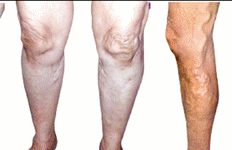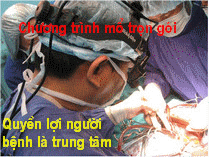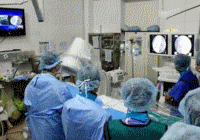Manual of Thoracic Surgery

Publisher: Stone Age Press | ISBN: 096158081X | edition 1986 | File type: CHM | 502 pages | 10,5 mb
Air, blood, lymph and food pass through the normal thorax at highly variable rates and pressures. Chest injuries and diseases regularly derange many critical body systems and functions. A Manual of Thoracic Surgery opens its detailed and practical discussion of thoracic physiology and thoracic surgery by reviewing all that the mere observation of a closed chest drainage system can reveal. This book was written for those who wish to understand more, and memorize less, about why they do what they do for their patients. It remains an internationally respected source of useful clinical insights on a wide range of surgical conditions. Background, Purpose and Approach Chest surgeons regularly assimilate new therapeutic concepts and technological advances. They routinely perform complex operative procedures with many sequential steps. And they repeatedly acquire new surgical techniques during post-graduate seminars and brief fellowships. Surgeons now in their 30's to 50's trained at a time when common thoracic surgical procedures were often routinely successful. But routine success has its own problems, as patients develop unrealistic expectations and surgeons become entrapped by technically demanding surgical procedures they have inherited. For even routine procedures sometimes go astray. And many operations in and about the chest remain far from routine. Yet under clinically threatening circumstances, many surgeons are reluctant to modify or relinquish their time-honored approaches. For those who have had no part in developing current procedures cannot always be sure why certain steps have become a part of their routine. Consequently, they feel pressured to do it the same way every time - even when circumstances might suggest something more appropriate - because any change could prove harmful and hard to defend. Countless surgical authorities and many surgical textbooks tell the surgeon how to operate in and about the chest. Some try to explain why things should be done in a certain fashion. But while surgical authorities regularly disagree on technical matters, many cannot clarify (and some do not know) which steps are essential and which represent the irrelevant residue of long-abandoned routines. Modern surgical practices evolved over centuries. They arose through countless episodes of trial and error, over innumerable dead bodies, amidst fervent vows that "I'll never do that again!". Indeed, it could not be otherwise. For surgical operations are often performed under emergency conditions. Even elective surgery proceeds without complete knowledge of the patient. And if one day it should become possible to obtain such complete knowledge (without performing an autopsy) it will still be impractical to acquire and utilize all of that information. Every surgical advance is eventually confirmed or discredited as individual surgeons observe individual operative outcomes. Surgical operations always involve many known and unknown variables. Hence good ideas are sometimes abandoned prematurely because a poor result was caused by an unrelated variable. And useless or even harmful irrelevancies sometimes persist unless clearly detrimental. These systemic difficulties, and innumerable individual idiosyncrasies, explain why different training programs generate so many different approaches to apparently identical surgical problems. They also explain why those who teach surgery - having suffered many disastrous outcomes - tend to view plausible but personally untested ideas or modifications with suspicion. So in the interests of patient safety and surgical efficiency, most surgical programs encourage those in training to "do it the same way every time". And that is what makes von Hippel's Manual so useful. For this book carefully and completely clarifies how, when and why a simple alternative approach could save the day. So while A Manual of Thoracic Surgery is no guide to the latest technological advances, it can certainly help those involved in thoracic surgery as they review, consolidate, upgrade and utilize more effectively the information they already possess about chest injuries and diseases.

















